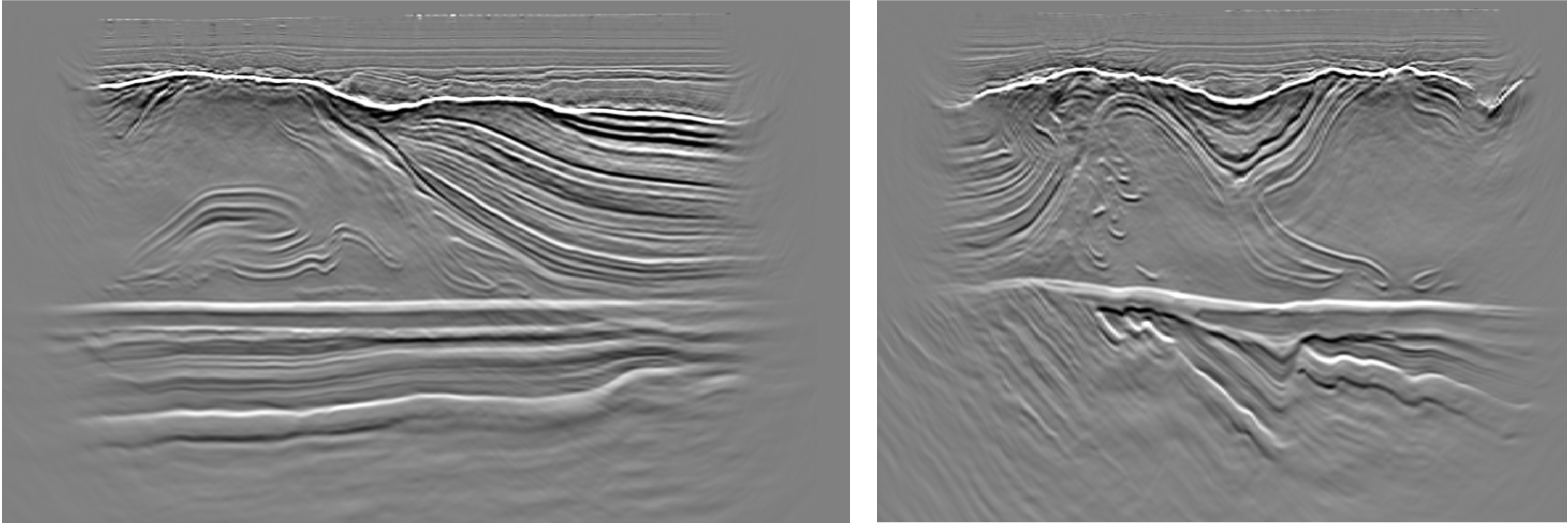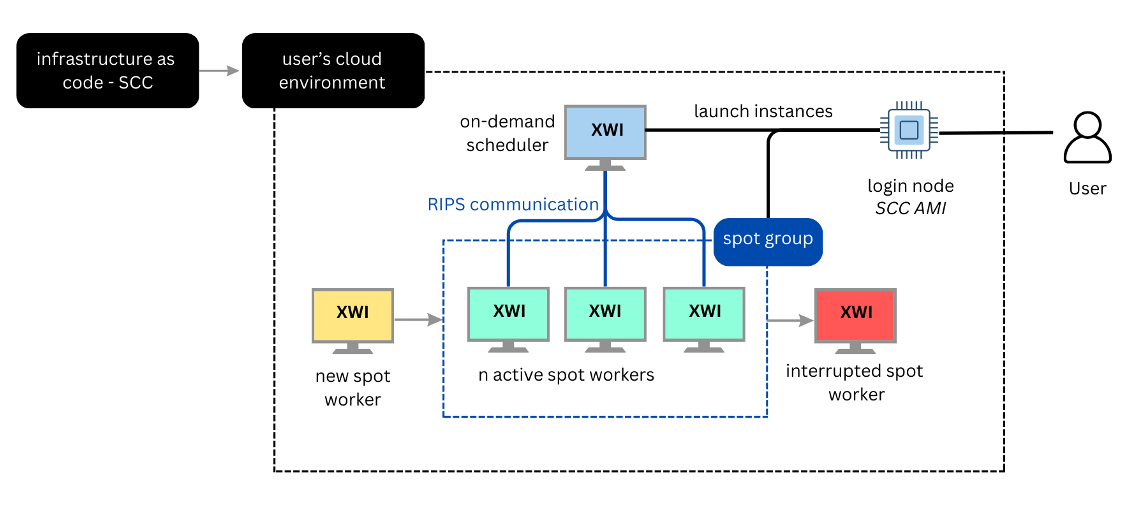Elastic AWI and RWI in the Santos Basin
Acoustic full-waveform inversion is often able to build high quality velocity models for sub-salt imaging using only acoustic wave propagation. This is achieved by adaptively matching acoustic data to the real-world elastic field data. Here we show both acoustic and elastic adaptive waveform inversion and reflection waveform inversion applied to salt affected ocean-bottom node data from the Santos Basin, offshore Brazil in partnership with Petrobras.
In this basin, the existence of high-velocity layered anhydrites within the salt generates elastic effects that appear sufficiently severe that full-elastic inversion is necessary in order to recover an adequate model. Combined RWI and elastic AWI are then able to generate a high-quality velocity model from raw hydrophone data that is sufficient for subsequent imaging using simple acoustic RTM.
By utilising different cost functions and modelling the elastic wave equation, XWI can accurately recover the salt structure even when starting from a featureless compaction trend velocity model. This advanced approach allows for the extraction of detailed subsurface features, as demonstrated in the accompanying images. These images illustrate the progression from the initial, simple model to the final, detailed velocity model, showcasing the effectiveness of XWI in resolving complex geological structures. The integration of various cost functions ensures that the inversion process can adapt to the specific challenges presented by the elastic properties of the subsurface, leading to more precise and reliable results.
Vp: start | 5Hz acoustic FWI | 20Hz elastic FWI

Start Vp. (Left: in-lines in the sub-salt strike direction. Right: cross-lines in the sub-salt dip direction.)

5Hz acoustic FWI Vp. (Left: in-lines in the sub-salt strike direction. Right: cross-lines in the sub-salt dip direction.)

20Hz elastic FWI Vp. (Left: in-lines in the sub-salt strike direction. Right: cross-lines in the sub-salt dip direction.) High-velocity anhydrites appear as thin red lines.
Reflectivity: 20Hz FWI | 45Hz conventional RTM

P-wave reflectivity image obtained by spatial differentiation of the elastic FWI acoustic-impedance model at 20 Hz. (Left: in-lines in the sub-salt strike direction. Right: cross-lines in the sub-salt dip direction.)

Corresponding conventional acoustic RTM run to 45 Hz. (Left: in-lines in the sub-salt strike direction. Right: cross-lines in the sub-salt dip direction.)
Cloud-native FWI on AWS
This inversion approach was executed on Petrobras' AWS account using the S-Cube Cloud solution, which is automatically deployed for seamless operation. The elasticity and vast computational resources of AWS enable rapid scaling, ensuring that large datasets are processed efficiently. This approach provides a robust and cost-effective solution for performing complex full-waveform inversion tasks, making high-resolution subsurface imaging more accessible and timelier.

Cloud solution architecture implemented on AWS